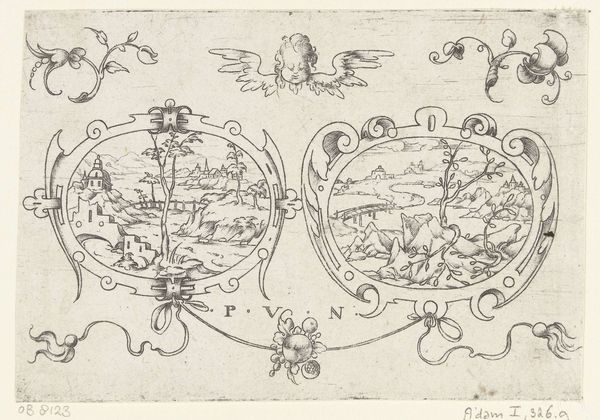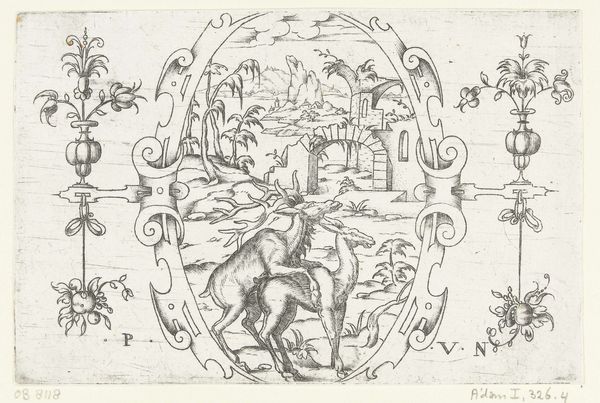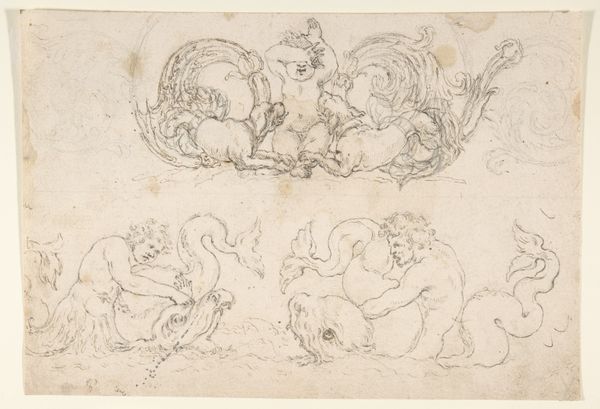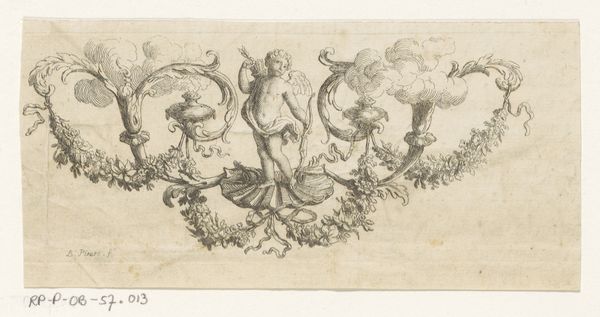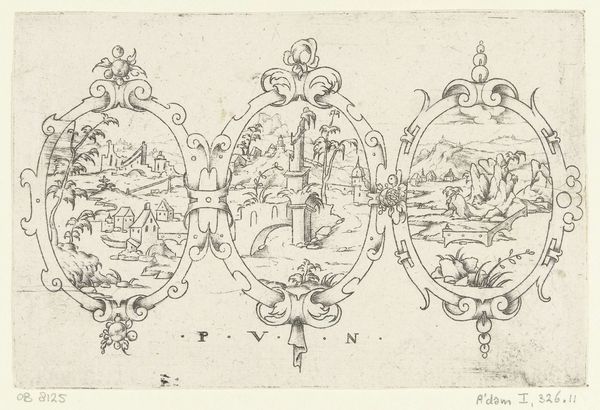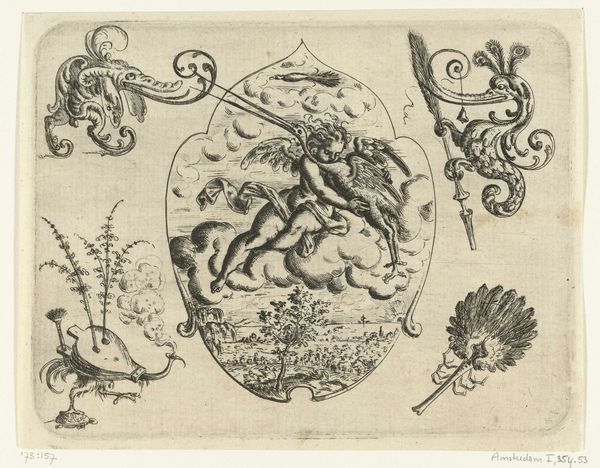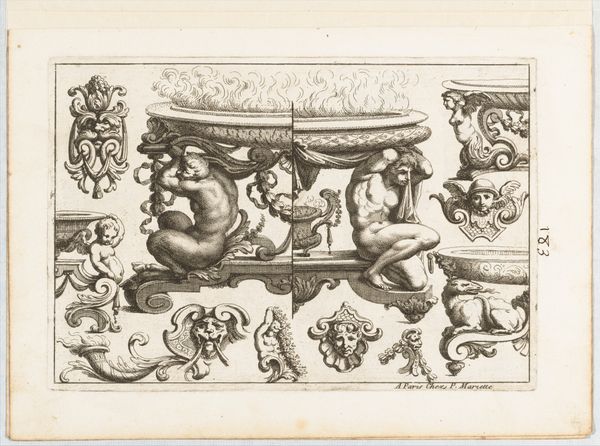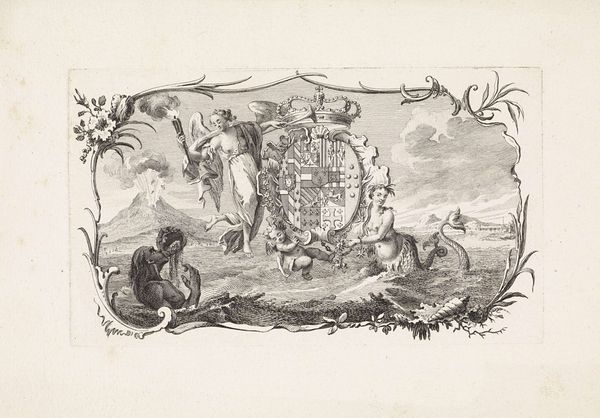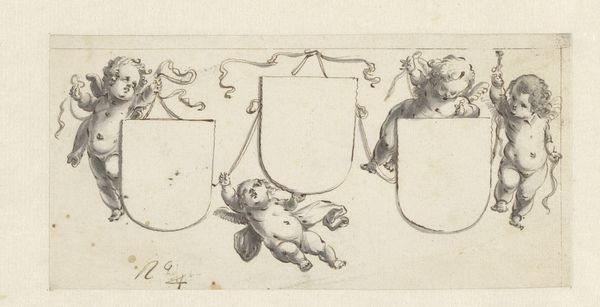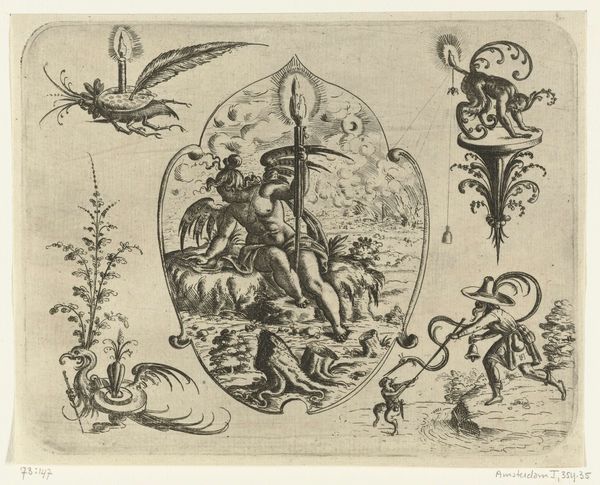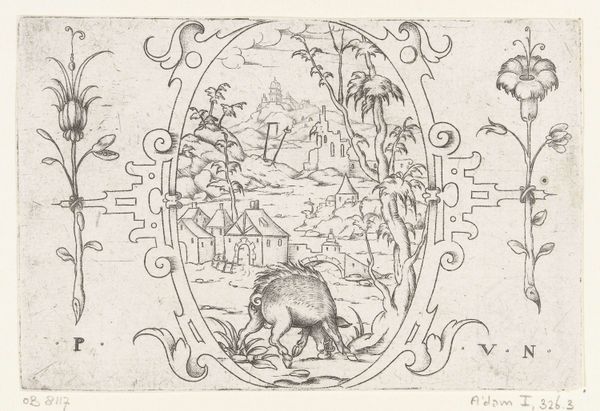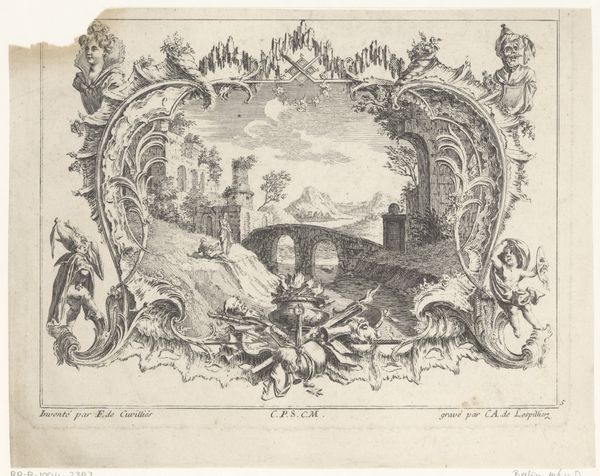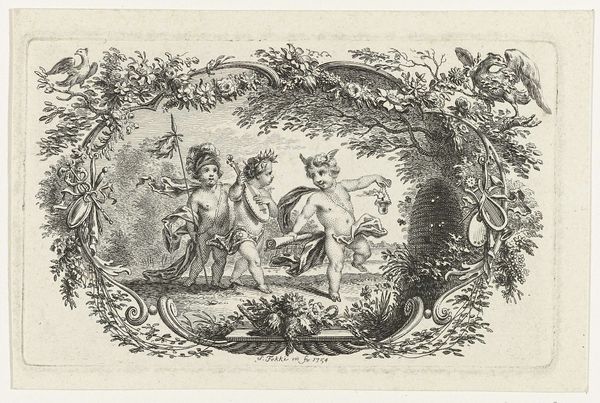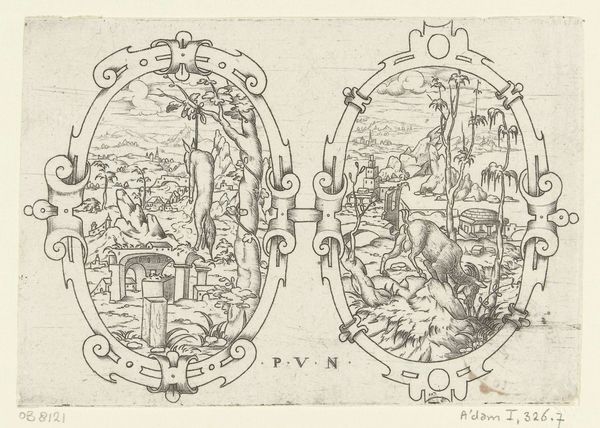
drawing, print, etching, ink, engraving
#
drawing
#
baroque
#
pen drawing
# print
#
pen illustration
#
pen sketch
#
etching
#
landscape
#
figuration
#
ink line art
#
ink
#
genre-painting
#
engraving
Dimensions: height 100 mm, width 153 mm
Copyright: Rijks Museum: Open Domain
Curator: Here we have “Twee liggende ovalen, links met een leeuwin,” or "Two reclining ovals, left with a lioness," created around the 17th century. Editor: My immediate reaction is how charming and delicate this work is; there’s something incredibly intricate about the line work and composition. Curator: It is the work of Paul (de Jonge) Flindt, made using etching, engraving, and ink. Looking at it through the lens of its time, the print reflects the widespread interest in exotic locales fueled by expanding trade routes. Editor: The baroque ornament embracing each scene, rendered in exquisite detail, certainly lends it a theatrical flair, a characteristic feature of the period, even as the landscape feels somehow off-kilter, idealized. The perspective is flattening the forms. Curator: Indeed. The work speaks to the rise of natural history studies, albeit filtered through the lens of colonial ambition. It brings a very European viewpoint to an imagined Africa or Asia. Note that there were publications cataloging exotic flora and fauna and those illustrations likely had some influence in depictions such as this one. Editor: It’s fascinating how the composition plays with dualities. On one side, the active lioness, on the other, the lumbering elephant. The hard-edged architectural remains juxtaposed against the fluidity of the riverbank, creates visual tensions throughout the prints. Curator: The print’s function most likely was decorative or even as part of an emblem book. Consider the potential social and cultural implications when wealthy Europeans put prints like these in their collections to project an air of worldly sophistication. Editor: I’m struck again by how expertly Flindt uses line to create depth and texture. It brings me closer to appreciate its craftmanship and understand a specific period of history in print form. Curator: Ultimately, the work shows a particular moment in Europe's engagement with the wider world. Editor: A potent reminder of how form and context together illuminate history, and history gives perspective to our sight.
Comments
No comments
Be the first to comment and join the conversation on the ultimate creative platform.
